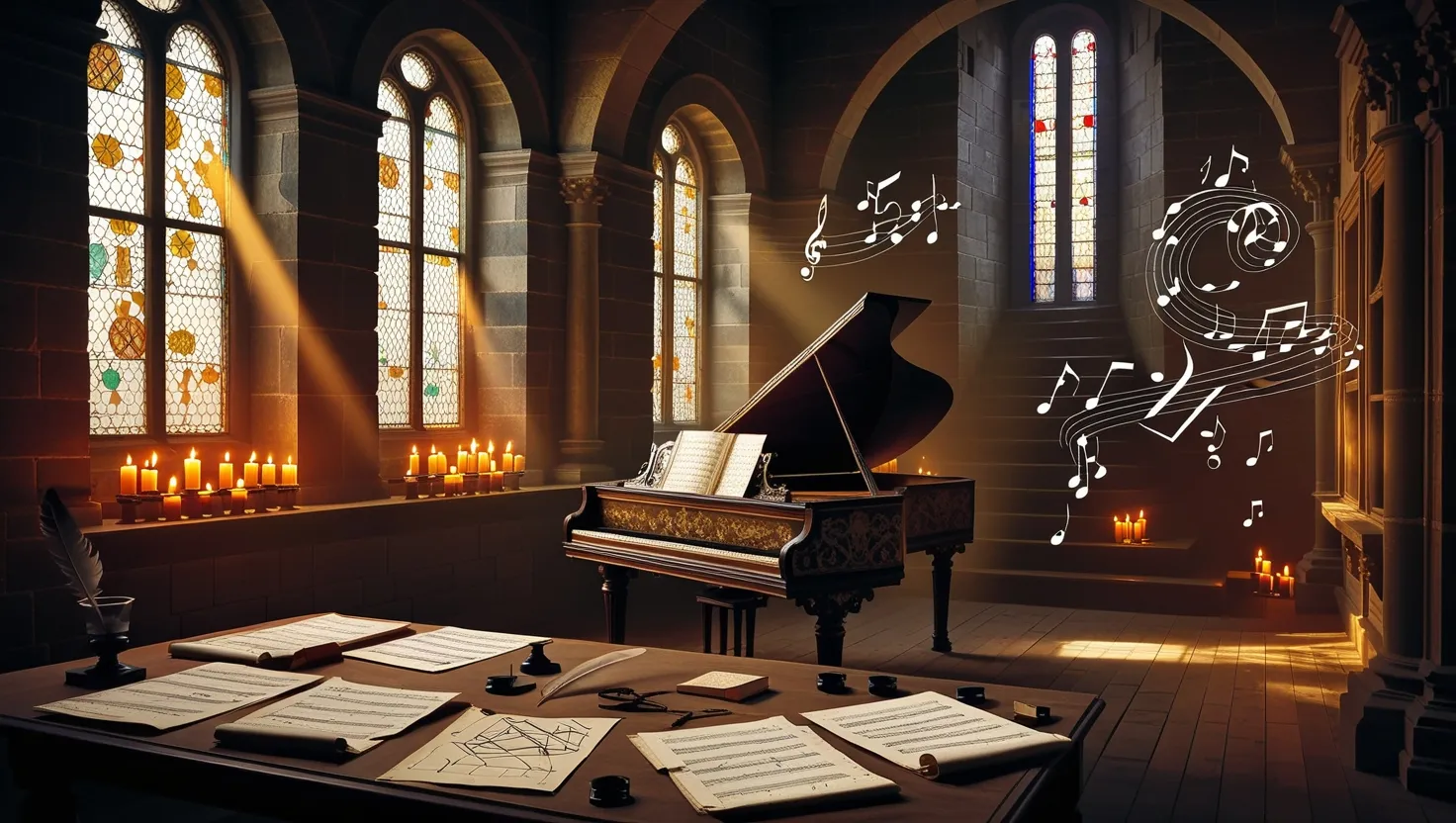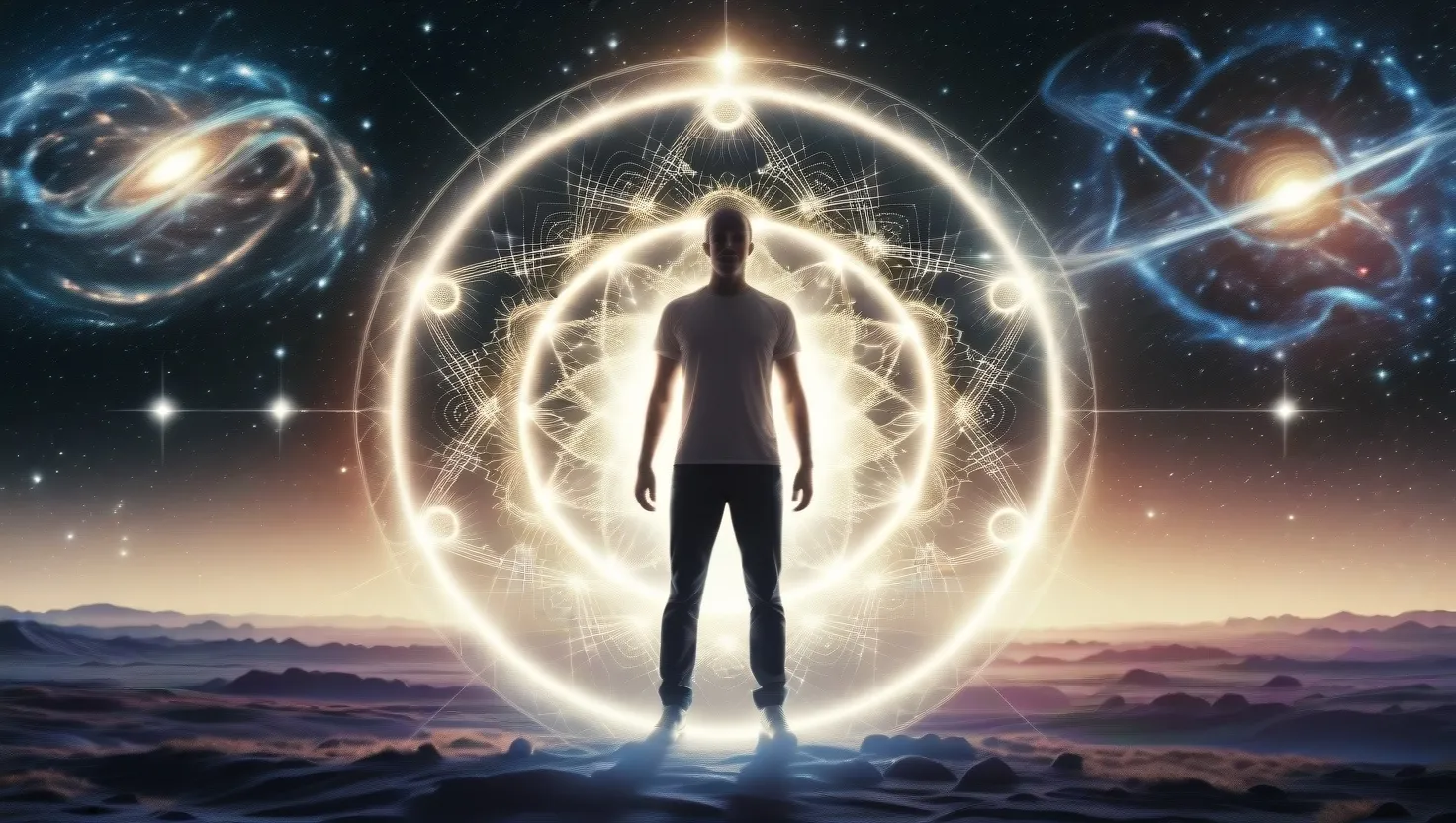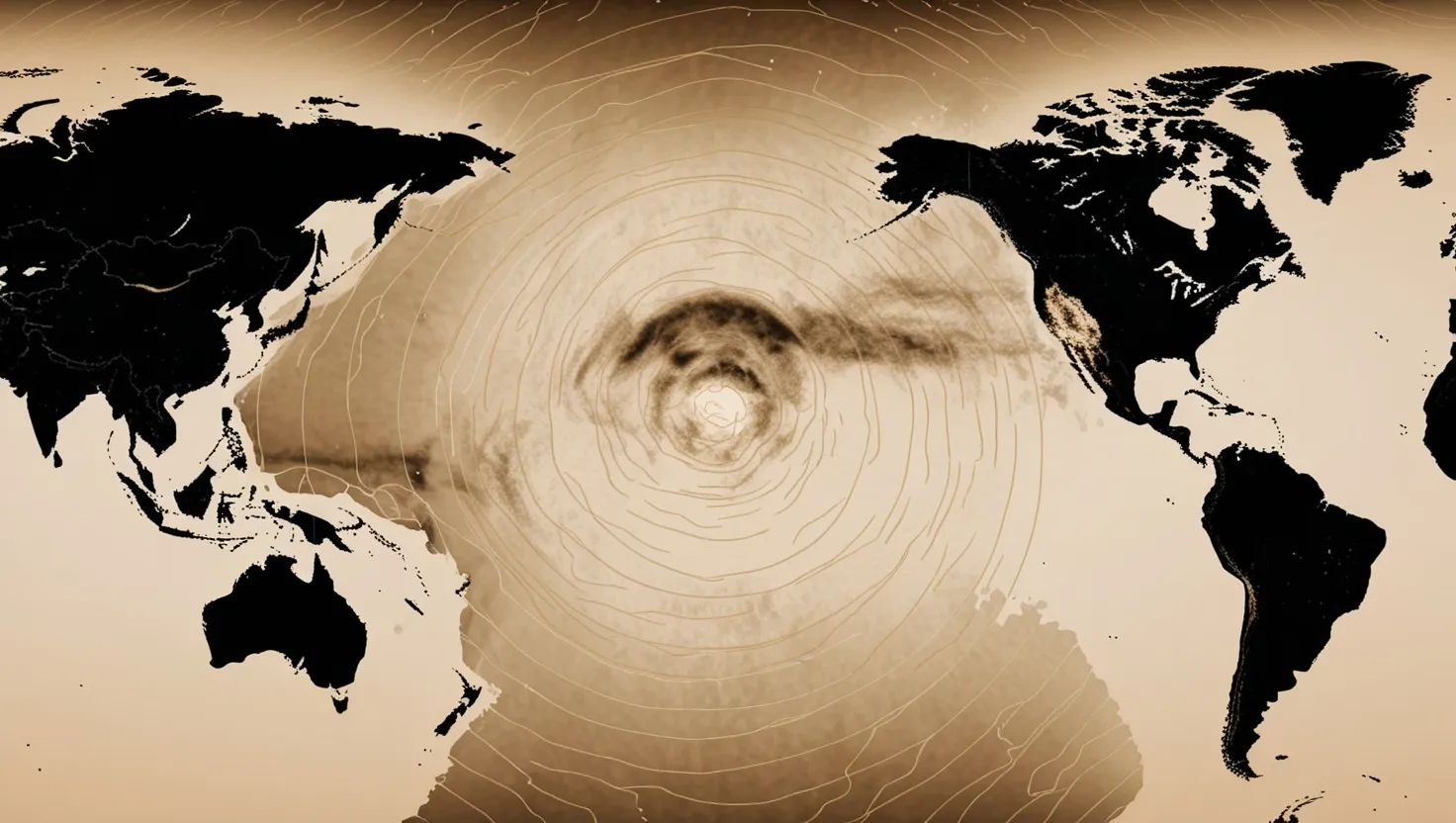Picture a grand candle-lit chamber, sunlight slanting through stained-glass windows onto parchment crowded with musical notations. A composer sits hunched over the harpsichord, feather quill pressed to his lips, lost in calculations that seem more at home in an astronomer’s observatory than a musician’s study. What if I told you that some of the greatest works from the Baroque era hide puzzles that continue to outfox minds centuries later? I invite you to join me as we pull back the velvet curtain and inspect seven Baroque compositions, each humming with mathematical oddities that tiptoe between genius and mystery.
Let’s start with a question: Why would a composer of sacred fugues weave fractal geometry into music, or pepper violin runs with patterns matching cosmic cycles? The truth might be stranger than fiction, and the implications nudge us toward a time when music and science walked hand in hand, whispering secrets across centuries.
Bach’s Contrapunctus XIV stands as an unfinished monument, its pages abruptly halting mid-thought. But look closer, and its fugue subjects mirror themselves at expanding and contracting scales, like the recursive spirals in a seashell or the jagged edges of a snowflake. Only with 20th-century computers did mathematicians have a name—fractals—for these shapes. Yet Bach, working through candlelight and ink, plotted these patterns with an accuracy that leaves theorists baffled today. Did he intuit chaos theory, or did something—someone—nudge his hand?
“Mathematics is the music of reason.” – James Joseph Sylvester
Antonio Vivaldi’s “Il Gran Mogul” is a flute concerto lost for centuries and rediscovered in a Scottish attic. Its structure reveals an astonishing secret: the durations and entrances of melodic lines align with prime number sequences. Stranger still, those same prime intervals track the timing of solar flares—cycles not mapped until satellites circled our planet. Is it coincidence that a Baroque maestro’s imaginings would so closely echo the sun’s restless heartbeats? Or could Vivaldi have had access to astronomical data etched in tradition, handed down in clandestine societies?
Next comes Handel, whose “Messiah” Hallelujah Chorus stirs audiences to their feet even today. But hidden beneath its rousing melodies are harmonic ratios that, when plotted, match the base-pair frequencies in human DNA, a double helix unknown before Crick and Watson. Is it possible that music could reflect structures not yet identified by science? Some musicologists suggest a kind of “biological resonance,” as though composers channeled patterns present throughout nature, embedding them in chords and counterpoint without understanding the biochemistry involved. Have you ever felt an unexplainable shiver while listening to the Hallelujah chorus? Perhaps your own cells were humming in tune.
“Where words fail, music speaks.” – Hans Christian Andersen
Domenico Scarlatti’s Sonata K. 87 wears its elegance on the surface, but its rhythmic grouping mirrors quantum entanglement probabilities—a phenomenon not experimentally observed until the 20th century. Think about that: One hand begins a theme, the other echoes with a deviation, and the interplay aligns with the mysterious mathematical laws governing particles separated by light years. I find myself wondering: Were composers like Scarlatti plumbing the depths of reality in ways science would only later uncover?
François Couperin’s “Les Barricades Mystérieuses” has always sounded mysterious, unfolding in looping patterns that never quite resolve. Yet cryptanalysts attempting to break its pattern have found it forms a flawless cipher, one still not cracked despite digital-age efforts. Was Couperin sending a message to posterity, or was the act of hiding something—anything—inside music the point itself? This piece forces us to ask: How many ciphers are hidden in plain sight, their keys scattered by the passage of centuries?
Georg Philipp Telemann’s Paris Quartets thrill with their interplay of flute, violin, viola da gamba, and continuo. What most don’t realize is that their harmonics fall on frequencies now known to synchronize human brainwaves, and even promote calm and coherence in listeners. This effect, observed in neurological research, suggests Telemann’s music might alter consciousness itself. Imagine a salon in 1730s Paris: Did listeners notice a subtle clarity descend as the music played, a shared mental space cultivated by unwitting artistry?
“Music gives a soul to the universe, wings to the mind, flight to the imagination and life to everything.” – Plato
Consider Arcangelo Corelli’s “La Folia” Variations. Its recurring theme and variations have been studied for centuries, but only in the last decade did astronomers realize the rhythmic recurrence matches the orbital coordinates of the great comet of 1680. Some argue this is mere numerology, coincidence manufactured by tireless minds, but I have to ask: Why would a theme designed for entertainment so perfectly describe a comet’s dance across the sky? Was Corelli encoding celestial events, passing information in a form only other initiated minds could read?
Are these patterns the fingerprints of genius, or do they suggest something stranger? Think about the possibilities. Was advanced knowledge circulating in hidden circles—a guild of musicians-astronomers, perhaps, preserving data in songs that only the chosen could decipher? Or does the human brain, in its quest for beauty, naturally thread together the laws of physics and biology, the universe’s own songbook writ small on parchment?
Each of these compositions invites debate. Some would claim that highlighting these patterns projects modern discoveries onto works of art, seeing fractals in fugues simply because we now understand fractals exist. Yet the precision with which these composers mirrored nature’s math remains hard to brush off. No amount of intuition or improvisation, it seems, can fully explain their uncanny accuracy.
“What we cannot speak about we must pass over in silence, but what if we can sing about it?” – Ludwig Wittgenstein (paraphrased)
What compels us to seek secret codes in art? Maybe it’s the feeling that music, more than any other language, hums at frequencies that bypass logic, reaching for truths we sense but can’t explain. There’s magic in the idea that each listening is an act of participation, that the act of playing or hearing these pieces connects us to a lineage of seekers, mathematicians, dreamers, and perhaps—just perhaps—a few conspirators.
If you were to sit with these seven scores and plot their patterns, would you stumble across an insight yet to be discovered? Would you find yourself seeing echoes of the cosmos or the cell, the cipher or the comet, mapped in fluttering sixteenths and sustained chords? The line between coincidence and design blurs in music’s shadows.
Let me leave you with a challenge: the next time you listen to a Baroque masterpiece, close your eyes and listen—not just for beauty, but for signals. Ask yourself: What are you really hearing? A simple melody, or a map to mysteries yet unsolved? Sometimes it seems the greatest secrets are hiding in harmony, waiting for someone bold enough to press their ear to the silence in between the notes.






